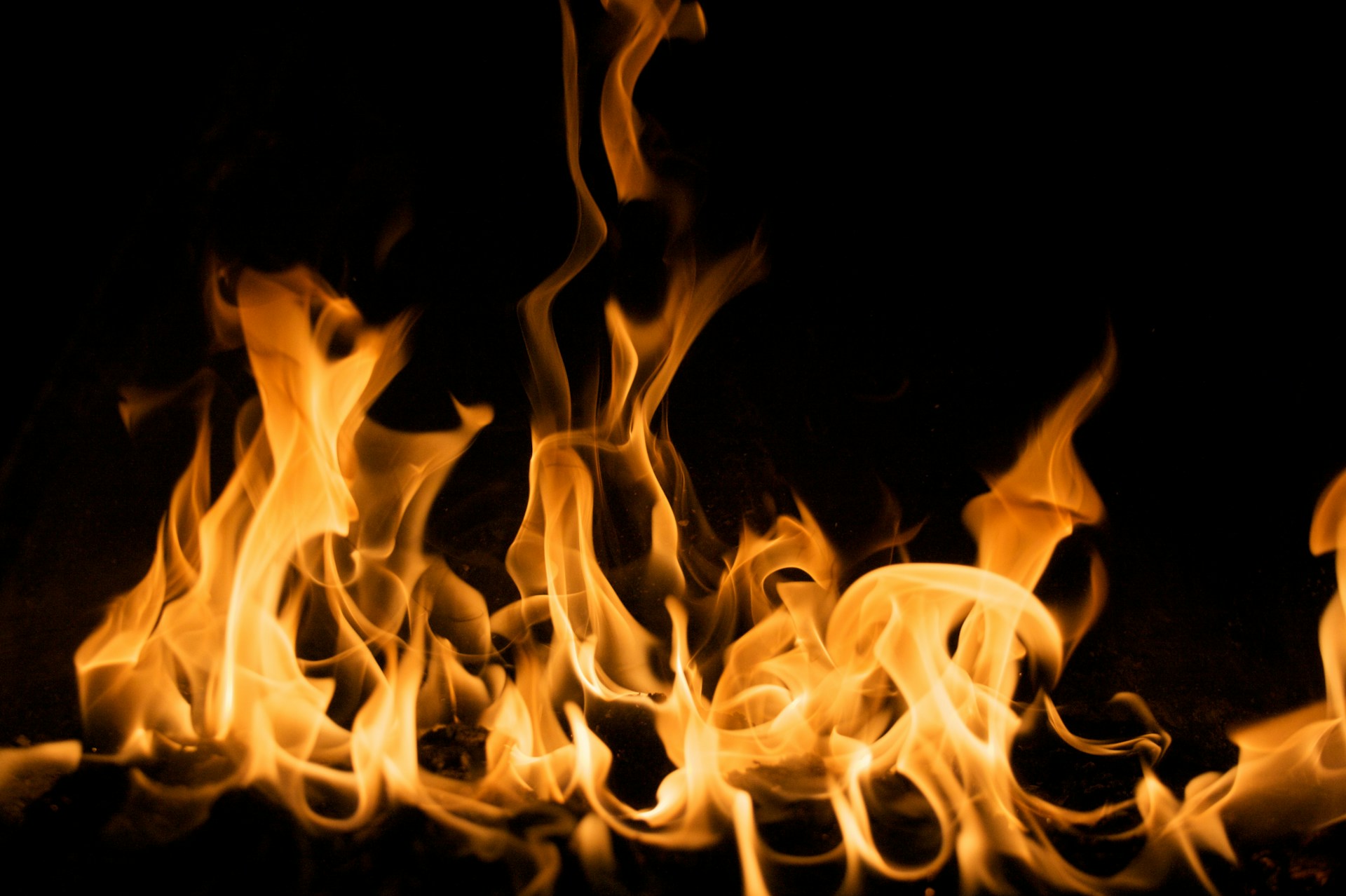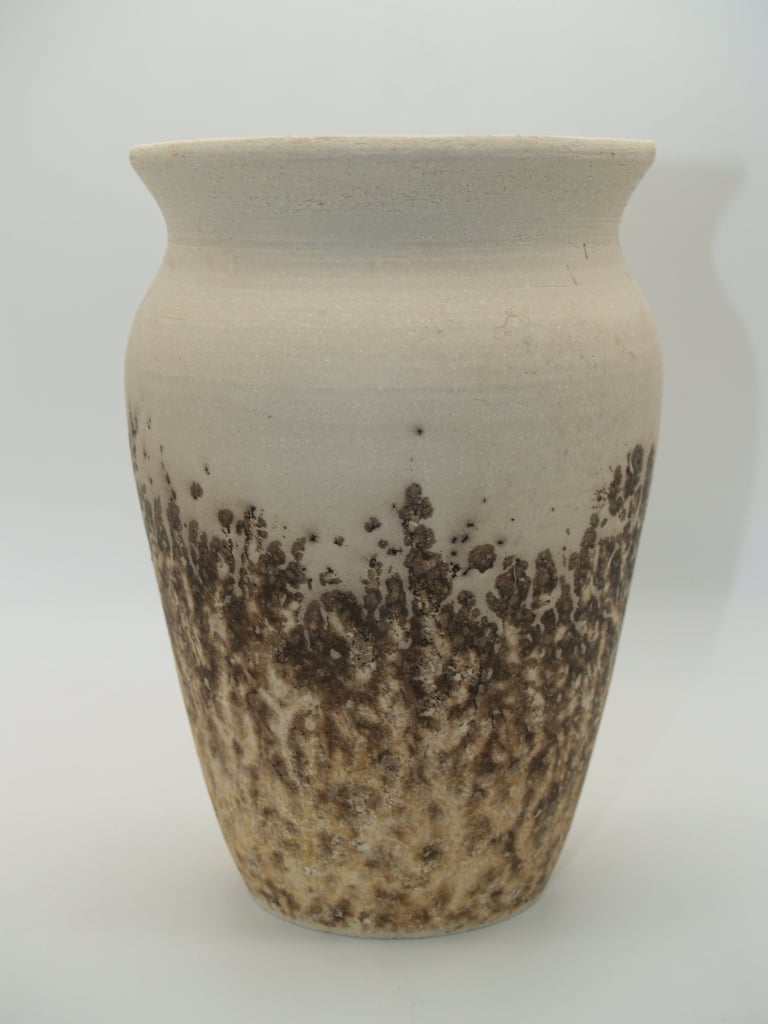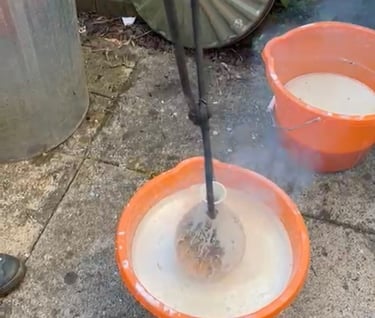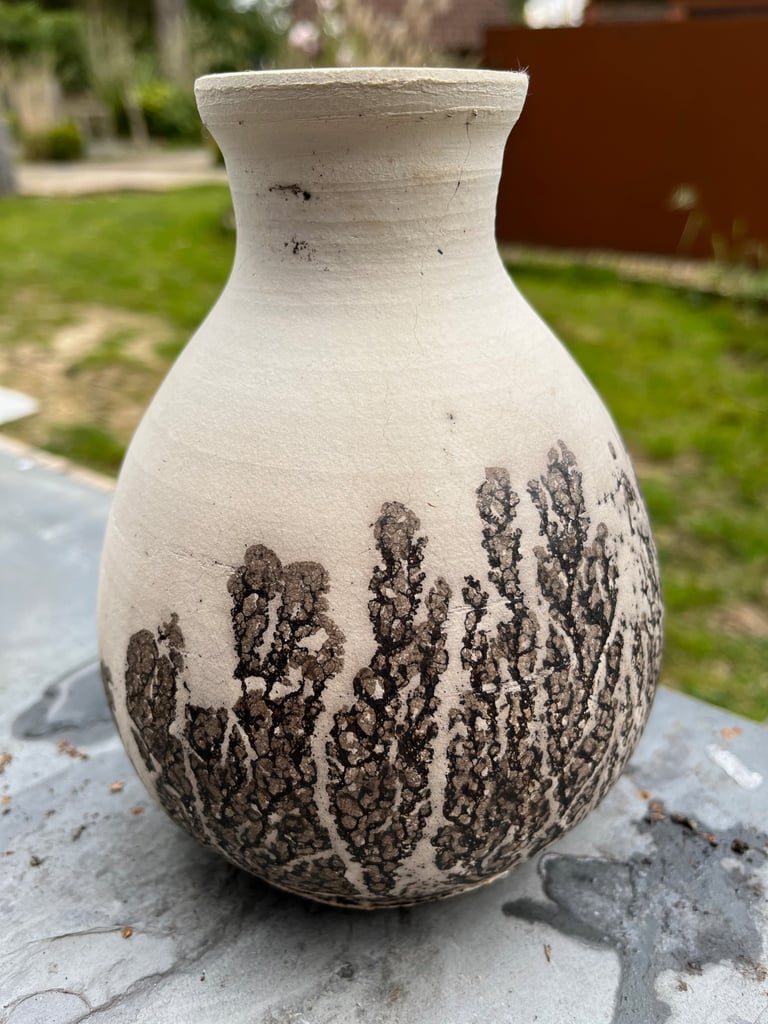
Obvara Raku


Obvara, or Baltic Raku as it is also known, is a relatively rare form of Raku which originated in Eastern Europe. It produces tree like effects on the pot as is particularly beautiful when done well.
The technique begins with a special type of Raku clay which is heavily grogged, this means it contains a lot of coarse material to reduce clay shrinkage and prevent the pot exploding with thermal shock. There is a good article here if you want to know more about grog.
The Obvara pots I make start with a type of clay called Ashraf Hanna, they are formed into the shape I require on the potters wheel, and left to dry for about 7-14 days. Once dry ('leather hard') the pot is fired in an electric kiln to 980 degrees Centigrade. This process is known as a 'Bisque fire' and turns the pot into ceramic so instead of crumbling it would now smash if you dropped it.
The Raku firing is the next step. The pot is placed into a gas fired kiln and slowly heated to about 700 degrees Centigrade for 45 minutes to an hour.


Once the pot reaches the required temperature it is removed from the kiln with tongs and quickly dunked into a mixture of flour, yeast, sugar and water which has been fermenting for a few days. The pot will come out of the mixture with only a faint impression of the design on it, but as it is left in the air the mixture on the pot burns and gets darker in seconds.
When I am happy with the look it is quenched in a bucket of cold water so the design doesn't darken any further. The special clay allows for this huge temperature change without cracking the pot.


